Osteoporosis
How to submit an article:
- Registered users can submit any published journal article that has a unique DOI (Digital Object Identifier) name or link to Research Hub.
- For example, you can paste the full DOI link:
https://doi.org/10.1109/5.771073or just the DOI name:10.1109/5.771073into the field above and click submit. - The person who is first to submit a valid article to Research Hub will forever be credited for it, and every article submission earns you +6 Research Points.
Osteoporosis is a progressive bone disease characterised by decreased bone mass and density, which can lead to an increased risk of fractures.
Related Topics
Published research studies are articles that present the findings of original research that has undergone a peer-review process and has been made publicly available in scholarly journals, books or other media.
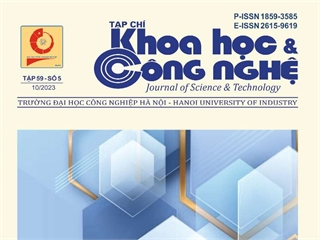
Investigate the antioxidant and anti-osteoporosis activities of compounds isolated from chrysanthemum indicum flowers
2023 Nov 30 Journal of Science and Technology - HaUI Le The Hoai, Nguyen Thi Huong, Bui Thi Thu Trang
Experimental Study Animal StudyThe compound (Z)-5’-Hydroxyjasmone 5’-O-β-D-Glucopyranoside from chrysanthemum flowers demonstrated superior antioxidant and anti-osteoporosis effects.

Effects of kidney tonic herbs for primary osteoporosis: A systematic review and meta-analysis
2023 Oct 27 Medicine Li W, Ye B, Huang Z, Zhou H, Feng J, Chen Q, et al.
Systematic Review Meta-Analysis Osteoporosis Kidney-Tonifying Herbs Fracture Risk Bone DensityKidney tonic herbs may enhance bone density and reduce fracture risk in patients with primary osteoporosis.

Soy protein, bioactive peptides, and isoflavones: A review of their safety and health benefits
2023 Sep PharmaNutrition Tan ST, Tan SS, Tan CX
Review Article Soybean Osteoporosis Isoflavone Cholesterol High Blood PressureSoy protein, bioactive peptides, and isoflavones are generally safe for consumption and may help reduce the risk of several significant health conditions.
Benefits of Soybean in the Era of Precision Medicine: A Review of Clinical Evidence
2023 Aug 28 Journal of Microbiology and Biotechnology Kang JH, Dong Z, Shin SH
Review Article Hot Flushes Type 2 DiabetesSoybean intake can potentially reduce risks of several cancers, type 2 diabetes, osteoporosis, and hot flashes, and it may negatively impact some drug treatments and cause allergies.

Green Tea and Benign Gynecologic Disorders: A New Trick for An Old Beverage?
2023 Mar 16 Nutrients Hazimeh D, Massoud G, Parish M, Singh B, Segars J, Islam MS
Review Article Green Tea Period PainGreen tea helps alleviate symptoms in multiple benign gynecological disorders, primarily due to a compound called Epigallocatechin-3-gallate.
Research insights are moderated by the Research Hub team and offer an at-a-glance overview of interesting research findings.

2023 Journal of Science and Technology - HaUI
The compound (Z)-5’-Hydroxyjasmone 5’-O-β-D-Glucopyranoside from chrysanthemum flowers demonstrated superior antioxidant and anti-osteoporosis effects.
Experimental Study
Investigate the antioxidant and anti-osteoporosis activities of compounds isolated from chrysanthemum indicum flowers
Le The Hoai, Nguyen Thi Huong, Bui Thi Thu Trang

2023 Medicine
Kidney tonic herbs may enhance bone density and reduce fracture risk in patients with primary osteoporosis.
Systematic Review Bone Density Fracture Risk Kidney-Tonifying Herbs
Effects of kidney tonic herbs for primary osteoporosis: A systematic review and meta-analysis
Li W, Ye B, Huang Z, Zhou H, Feng J, Chen Q, et al.

2023 PharmaNutrition
Soy protein, bioactive peptides, and isoflavones are generally safe for consumption and may help reduce the risk of several significant health conditions.
Review Article Cholesterol High Blood Pressure Isoflavone Soybean
Soy protein, bioactive peptides, and isoflavones: A review of their safety and health benefits
Tan ST, Tan SS, Tan CX
2023 Journal of Microbiology and Biotechnology
Soybean intake can potentially reduce risks of several cancers, type 2 diabetes, osteoporosis, and hot flashes, and it may negatively impact some drug treatments and cause allergies.
Review Article Hot Flushes Type 2 Diabetes
Benefits of Soybean in the Era of Precision Medicine: A Review of Clinical Evidence
Kang JH, Dong Z, Shin SH

2023 Nutrients
Green tea helps alleviate symptoms in multiple benign gynecological disorders, primarily due to a compound called Epigallocatechin-3-gallate.
Review Article Green Tea Period Pain
Green Tea and Benign Gynecologic Disorders: A New Trick for An Old Beverage?
Hazimeh D, Massoud G, Parish M, Singh B, Segars J, Islam MS
Review Articles
Review articles summarise and critically evaluate the current state of research on a specific topic or field by synthesising multiple primary research studies.

Effects of kidney tonic herbs for primary osteoporosis: A systematic review and meta-analysis
2023 Oct 27 Medicine Li W, Ye B, Huang Z, Zhou H, Feng J, Chen Q, et al.
Systematic Review Meta-Analysis Osteoporosis Kidney-Tonifying Herbs Fracture Risk Bone DensityKidney tonic herbs may enhance bone density and reduce fracture risk in patients with primary osteoporosis.

Soy protein, bioactive peptides, and isoflavones: A review of their safety and health benefits
2023 Sep PharmaNutrition Tan ST, Tan SS, Tan CX
Review Article Soybean Osteoporosis Isoflavone Cholesterol High Blood PressureSoy protein, bioactive peptides, and isoflavones are generally safe for consumption and may help reduce the risk of several significant health conditions.
Benefits of Soybean in the Era of Precision Medicine: A Review of Clinical Evidence
2023 Aug 28 Journal of Microbiology and Biotechnology Kang JH, Dong Z, Shin SH
Review Article Hot Flushes Type 2 DiabetesSoybean intake can potentially reduce risks of several cancers, type 2 diabetes, osteoporosis, and hot flashes, and it may negatively impact some drug treatments and cause allergies.

Green Tea and Benign Gynecologic Disorders: A New Trick for An Old Beverage?
2023 Mar 16 Nutrients Hazimeh D, Massoud G, Parish M, Singh B, Segars J, Islam MS
Review Article Green Tea Period PainGreen tea helps alleviate symptoms in multiple benign gynecological disorders, primarily due to a compound called Epigallocatechin-3-gallate.

Calcium and vitamin D for increasing bone mineral density in premenopausal women
2023 Jan 27 Cochrane Database of Systematic Reviews Méndez-Sánchez L, Clark P, Winzenberg TM, Tugwell P, Correa-Burrows P, Costello R
Systematic Review Osteoporosis CalciumClinical Trials
Clinical trials are research studies that involve people and are conducted to evaluate the safety and efficacy of new treatments or interventions, such as drugs, medical devices, or behavioural therapies.
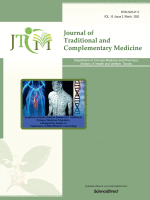
Effect of Zuogui pill and Yougui pill on osteoporosis: a randomized controlled trial
2018 Feb Journal of Traditional and Complementary Medicine Wenxiong L, Kuaiqiang Z, Zhu L, Li L, Yan C, Jichao Y, et al.
Zuogui pill or Yougui pill could improve bone mineral density (BMD), ease pain, relieve Kidney deficiency syndrome, improve the quality of life osteoporosis patients, inhibit bone conversion and regulate the coupling balance of bone formation and bone resorption.
Randomised Controlled Trial You Gui Wan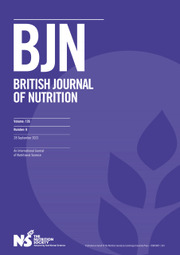
Comparative effects of dried plum and dried apple on bone in postmenopausal women
2011 May 31 British Journal of Nutrition Hooshmand S, Chai SC, Saadat RL, Payton ME, Brummel-Smith K, Arjmandi BH
Randomised Controlled Trial Osteoporosis Bone Mineral Density PlumDried plum consumption enhances bone mineral density in postmenopausal women, primarily by reducing the rate of bone turnover.
Study Protocols
Published study protocols are detailed plans that outline the objectives, methodology, statistical analyses, and organisation of a research study that have been made publicly available for others to review and use as a reference.

Efficacy and safety of acupuncture in combination with Chinese herbal medicine in dealing with osteoporosis: A protocol for a systematic review and network meta-analysis
2022 Dec 30 Medicine Long P, Ju S, Wang J
The current systematic review and network meta-analysis will provide the effectiveness and safety of acupuncture in combination with CHM in dealing with OP. The research will provide reliable evidence for the clinical use of acupuncture in combination with CHM in dealing with OP.
Study Protocol Acupuncture
Efficacy and safety of Chinese herbal medicine Buzhong Yiqi decoction for postmenopausal women with osteoporosis: A protocol for systematic review and meta-analysis
2022 Nov 11 Medicine Xiang K, Yang J, Liu W, Chen L, Hou H, Zhou X, et al.
This study will evaluate the efficacy and safety of BZYQD in the treatment of PMOP, to provide high-quality, evidence-based clinical recommendations. It will also provide a trustable clinical foundation for BZYQD in the treatment of PMOP.
Study Protocol Bu Zhong Yi Qi Tang Chinese Herbal Medicine
Chinese herbal medicine Xianling Gubao capsule for knee osteoarthritis
2022 Jan 21 Medicine Liu W, Xu D, Qi Q, Li J, Ou L
A high-quality evidence of XLGBC for the treatment of KOA will be generated from the aspects of safety and efficacy. This systematic review will provide evidence to help us confirm the clinical efficacy of XLGBC in the treatment of KOA.
Study Protocol Knee Osteoarthritis Xian Ling Gu Bao FormulaPresentation Slides

Experimental Study
The compound (Z)-5’-Hydroxyjasmone 5’-O-β-D-Glucopyranoside from chrysanthemum flowers demonstrated superior antioxidant and anti-osteoporosis effects.
Le The Hoai, Nguyen Thi Huong, Bui Thi Thu Trang

Systematic Review
Kidney tonic herbs may enhance bone density and reduce fracture risk in patients with primary osteoporosis.
Li W, Ye B, Huang Z, Zhou H, Feng J, Chen Q, Huang H, Meng S, Qie F, Shi X.

Review Article
Soy protein, bioactive peptides, and isoflavones are generally safe for consumption and may help reduce the risk of several significant health conditions.
Tan ST, Tan SS, Tan CX

Review Article
Soybean intake can potentially reduce risks of several cancers, type 2 diabetes, osteoporosis, and hot flashes, and it may negatively impact some drug treatments and cause allergies.
Kang JH, Dong Z, Shin SH

Review Article
Green tea helps alleviate symptoms in multiple benign gynecological disorders, primarily due to a compound called Epigallocatechin-3-gallate.
Hazimeh D, Massoud G, Parish M, Singh B, Segars J, Islam MS
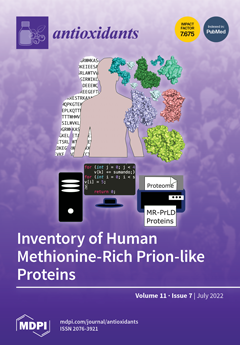
Clinical Study
Preclinical studies related to osteoporosis have reported favorable effects of honey on cortical and trabecular bone microstructure, bone strength, and oxidative stress.
Martiniakova M, Kovacova V, Mondockova V, Zemanova N, Babikova M, Biro R, Ciernikova S, Omelka R

Clinical Study
Clinical studies related to breast cancer have revealed that honey is effective in increasing blood cell counts, interleukin-3 levels, and quality of life.
Martiniakova M, Kovacova V, Mondockova V, Zemanova N, Babikova M, Biro R, Ciernikova S, Omelka R
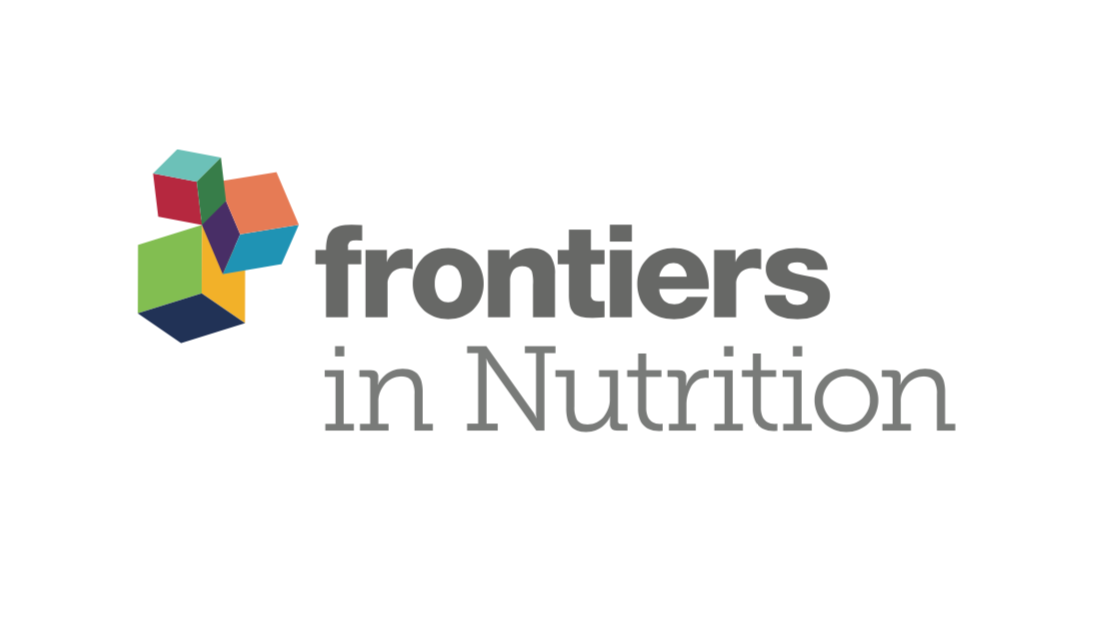
Clinical Study
Moderate beer intake does not show a protective effect against bone loss in early post-menopausal women.
Trius-Soler M, Tresserra-Rimbau A, Moreno JJ, Peris P, Estruch R, Lamuela-Raventós RM
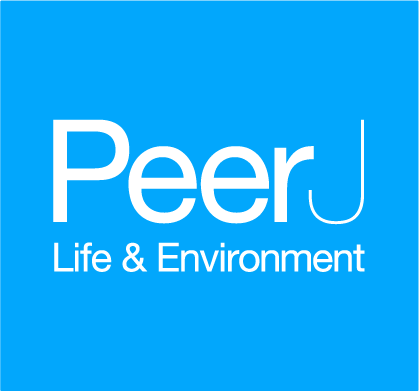
Network Pharmacology
The primary ingredient of Shenling Baizhu powder, Rutin, can improve polycystic ovary syndrome and postmenopausal osteoporosis by binding to the aromatic hydrocarbon receptor, thus inhibiting cell apoptosis.
Liang J, Bao A, Ma H, Dong W, Li W, Wu X, Li H, Hou H, Chen Y, Fu J, Shao C
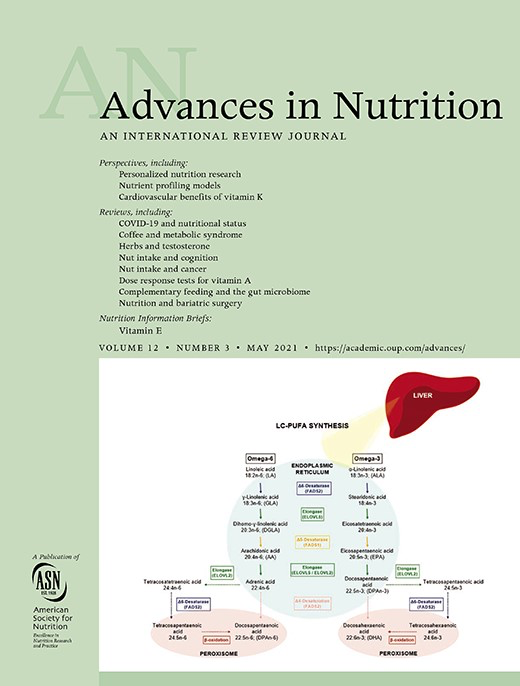
Systematic Review
Prunes demonstrate potential as a dietary intervention to protect against, prevent and even reverse bone loss in osteoporosis, particularly in postmenopausal women.
Damani JJ, De Souza MJ, VanEvery HL, Strock NCA, Rogers CJ
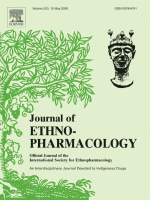
Systematic Review
Adding Du Huo Ji Sheng Decoction on bisphosphonate medications seems to be an effective and safe strategy in treating patients with osteoporosis.
Huang CY, Cheng CJ, Chiou WF, Chang WC, Kang YN, Lee MH

Review Article
Coconut water possesses unique compound profiles that imbue it with a broad spectrum of medical properties, incorporating aspects of nutrition, pharmacology, and disease prevention.
Rethinam P, Krishnakumar V
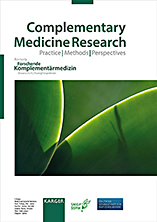
Systematic Review
Soy food intake, particularly fermented soy products, appear to have a protective effect on fracture risk among Asian women, especially in early menopause.
Akhavan Zanjani M, Rahmani S, Mehranfar S, Zarrin M, Bazyar H, Moradi Poodeh B, Zare Javid A, Hosseini SA, Sadeghian M

Systematic Review
Isoflavones found in soybeans can reduce risks of certain cancers and alleviate menopause-related symptoms among women, such as vasomotor syndromes, spinal bone loss, and hypertension.
Chen LR, Chen KH
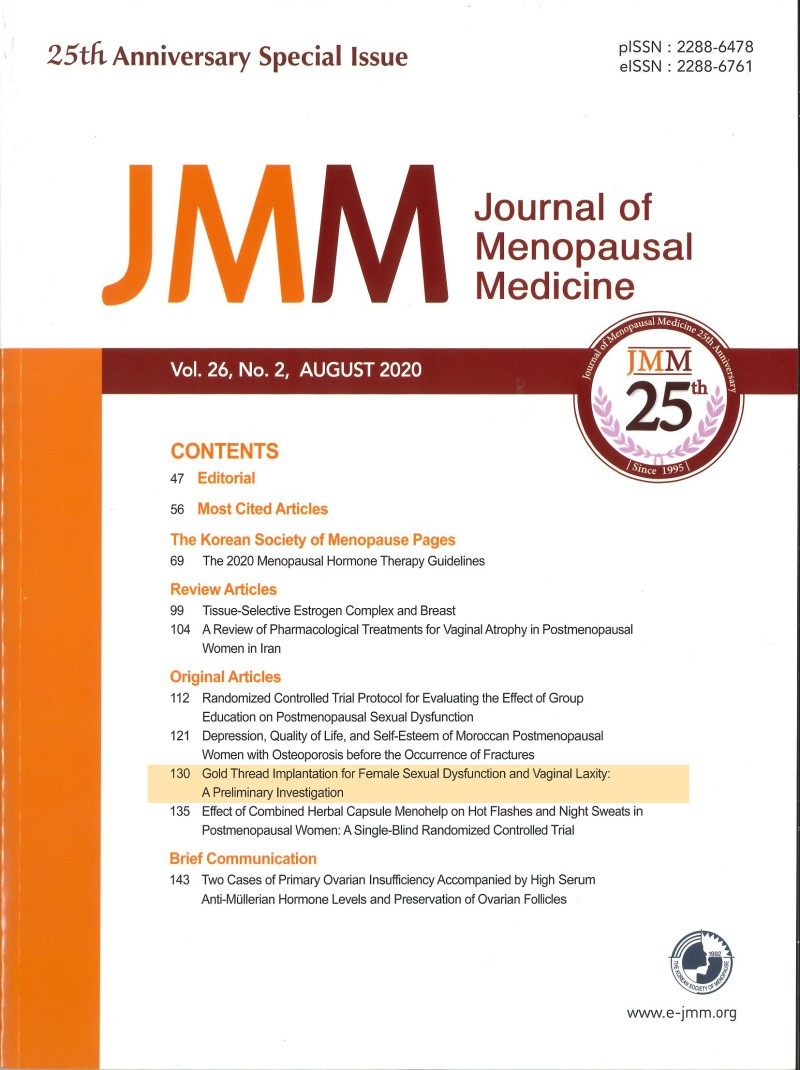
Clinical Study
Alkaline drinking water significantly improves spine bone density in postmenopausal women with osteoporosis, more than standard treatment alone.
Fasihi S, Fazelian S, Farahbod F, Moradi F, Dehghan M

Review Article
Isoflavones, mainly found in soy-derived products, show beneficial effects on bone health, potential cancer risk reduction, and alleviation of menopausal symptoms, but not on cardiovascular risk.
Gómez-Zorita S, González-Arceo M, Fernández-Quintela A, Eseberri I, Trepiana J, Portillo MP
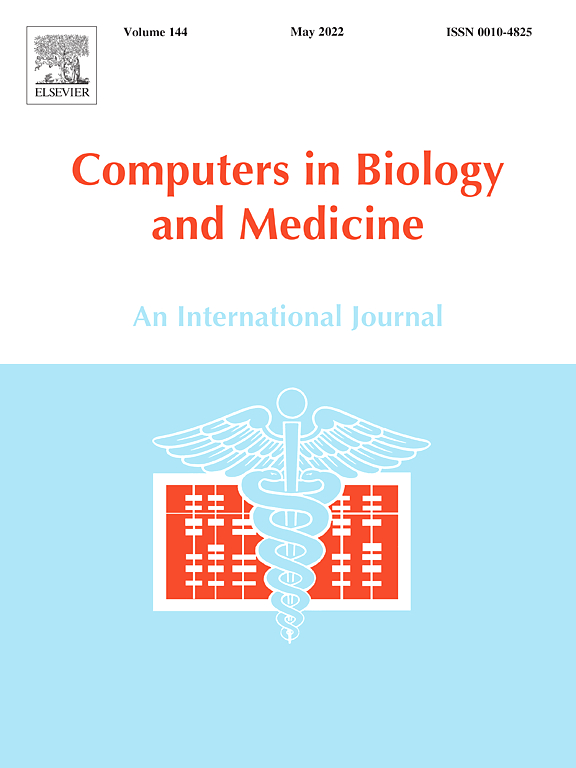
Network Pharmacology
Ba Ji Tian may prevent osteoporosis through the ovarian steroidogenesis signaling pathway. The anti-osteoporosis targets of Ba Ji Tian mainly play a role in the response to steroid hormones.
Liu ZW, Luo ZH, Meng QQ, Zhong PC, Hu YJ, Shen XL

Review Article
Catechins in green tea potentially counteract osteoporosis by negatively affecting bone loss processes and enhancing bone formation processes.
Huang HT, Cheng TL, Lin SY, Ho CJ, Chyu JY, Yang RS, Chen CH, Shen CL
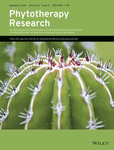
Systematic Review
Zuo Gui Wan combined with anti-osteoporosis drugs may have beneficial effects on osteoporosis with respect to bone mineral density and bone metabolism markers.
Li J, Sun K, Qi B, Feng G, Wang W, Sun Q, Zheng C, Wei X, Jia Y

Systematic Review
Our meta-analysis provides promising evidence to suggest that using the Tonifying-Kidney principle combined with western medicines for primary osteoporosis is more effective than using western medicines alone.
Liang J, Wang F, Huang J, Xu Y, Chen G

Systematic Review
Du Huo Ji Sheng Decoction monotherapy or combined with antiosteoporosis drugs may have beneficial effects for postmenopausal osteoporosis.
Li J, Wang W, Feng G, Du J, Kang S, Li Z, Zhu W, Shang H

Review Article
Honey can protect the bone via its antioxidant and anti-inflammatory properties, primarily through its polyphenol content that acts upon several signalling pathways, leading to bone anabolic and antiresorptive effects.
Kamaruzzaman MA, Chin KY, Mohd Ramli ES

Review Article
Chrysanthemum, rich in unique chemical compounds, offers significant health benefits such as stress relief, cardio protection, immunity boost, improved eye health, and osteoporosis risk reduction.
SHAHRAJABIAN, M. H., SUN, W., ZANDI, P., CHENG, Q.

Experimental Study
Extract of pumpkin seeds displays estrogenic properties, potentially offering a solution to alleviate symptoms of menopausal syndromes resulting from estrogen deficiency.
Lestari B, Walidah Z, Utomo RY, Murwanti R, Meiyanto E

Theoretical Article
Chrysanthemum, a plant primarily grown in China and Japan, offers significant health benefits including stress reduction, cardiovascular improvement, and lowering osteoporosis risk.
SHAHRAJABIAN MH

Review Article
Blueberry anthocyanins have a potential role in preventing osteoporosis and demonstrate positive antioxidant and anti-inflammatory activity.
, Jones DR

Experimental Study
Higher iron levels after menopause appear to be risk factors for osteoporosis, and hormone hepcidin, which regulates iron, might be a potential therapeutic target for this condition.
Zhang P, Wang S, Wang L, Shan BC, Zhang H, Yang F, Zhou ZQ, Wang X, Yuan Y, Xu YJ

Animal Study
Dried plums potentially prevent and reverse bone loss in postmenopausal women facing osteoporosis, offering a promising functional food therapy solution with long-lasting effects.
Arjmandi BH, Johnson SA, Pourafshar S, Navaei N, George KS, Hooshmand S, Chai SC, Akhavan NS

Review Article
Dried plums, or prunes, have potential to exert beneficial effects on bone health and may help in combating osteoporosis in postmenopausal women, if consumed as part of their recommended fruit intake.
Wallace T
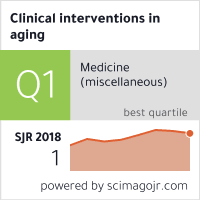
Systematic Review
The Chinese herbal formula Erxian decoction appears to be more effective than basic supplements in treating osteoporosis.
Li JY, Jia YS, Chai LM, Mu XH, Ma S, Xu L, Wei X
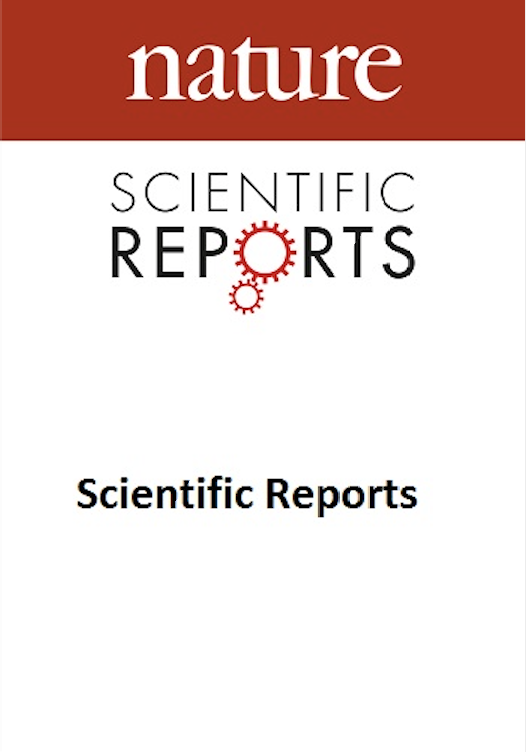
Systematic Review
Clinicians may consider Tai Chi as a viable complementary and alternative medicine for chronic pain conditions.
Kong, L., Lauche, R., Klose, P. et al.

Experimental Study
The ethanol extract of FCI potentially counters bone loss in mice by enhancing osteoblast proliferation and differentiation, facilitated by multiple bioactive compounds.
Li J, Lin X, Zhang Y, Liu W, Mi X, Zhang J, Su J

Experimental Study
Two new compounds found in Chrysanthemum indicum flowers have strong antioxidant qualities and are potent in anti-osteoporosis activity.
Luyen BTT, Tai BH, Thao NP, Lee YM, Lee SH, Jang HD, Kim YH
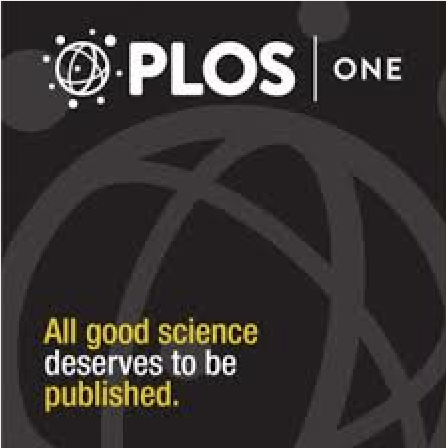
Animal Study
Dried plum intake uniquely improves bone density, promotes growth of vertebral trabecular bone, prevents bone loss in tibia, and positively adjusts bone metabolism.
Rendina E, Hembree KD, Davis MKR, Marlow D, Clarke SL, Halloran BP, Lucas EA, Smith BJ
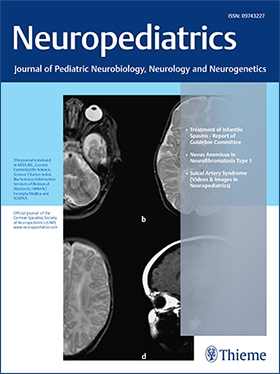
Clinical Study
Hop extract, particularly its component 8-Prenylnaringenin (8-PN), demonstrates potential in alleviating symptoms common in menopause such as osteoporosis, vasomotoric disturbances, and sexual motivation.
Keiler A, Zierau O, Kretzschmar G

Randomised Controlled Trial
Dried plum consumption enhances bone mineral density in postmenopausal women, primarily by reducing the rate of bone turnover.
Hooshmand S, Chai SC, Saadat RL, Payton ME, Brummel-Smith K, Arjmandi BH
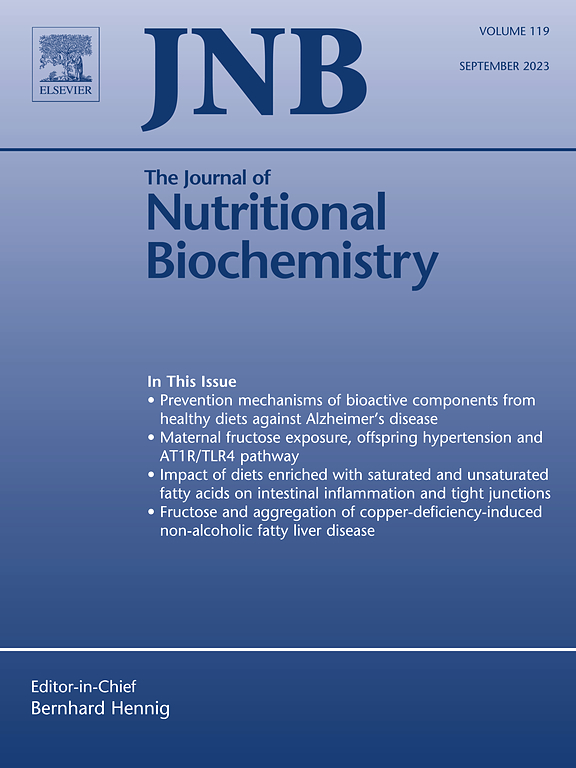
Experimental Study
Blueberry consumption can prevent bone loss and positively impact bone metabolism in ovariectomized rats.
Devareddy L, Hooshmand S, Collins JK, Lucas EA, Chai SC, Arjmandi BH
Executive Summary
Write an executive summary in the form of a blog article on the topic of "Research into Chinese medicine treatment for Osteoporosis" summarising the research below and using language that can be easily understood by patients and avoiding medical jargon using a professional and caring tone of voice.
Write an executive summary in the form of a blog article on the topic of "Researched Chinese medicine treatments for Osteoporosis" summarising the research below in an objective and easy to understand way, and using language that can be easily understood by patients. Group the article into Chinese medicine treatments first, followed by nutrition and other treatments. Avoid using medical jargon and use a professional and caring tone of voice.
Write me a concise but easy to understand executive summary on the topic of "Chinese medicine treatments for Osteoporosis" based on the following research that I will give you. Your summary should be 2 paragraphs long in Australian English spelling and include references to the studies.
A Experimental Study published in 2023 in the journal Journal of Science and Technology - HaUI found that The compound (Z)-5’-Hydroxyjasmone 5’-O-β-D-Glucopyranoside from chrysanthemum flowers demonstrated superior antioxidant and anti-osteoporosis effects. The research involved isolating five compounds from Chrysanthemum indicum L flowers: Syringin, Dihydrosyringin, Benzyl-O-β-D- glucopyranoside, -Phenylethoxy-O--D-glucopyranoside, and (Z)-5’-Hydroxyjasmone 5’-O-β-D-Glucopyranoside. The identification and structure determination of these compounds were performed via the interpretation of their 1D - NMR spectra and comparison to established literature. The collected compounds were then assessed for their antioxidative and anti-osteoporosis activities. During the analysis of results, it was observed that the compound (Z)-5’-Hydroxyjasmone 5’-O-β-D-Glucopyranoside exhibited significantly higher antioxidant activity and anti-osteoporosis effects compared to the others. It showed a strong capacity for peroxyl radical scavenging, surpassing the protection offered by the standard Trolox. Dihydrosyringin also demonstrated a good reducing capacity, as indicated by its CUPRAC values. Furthermore, (Z)-5’-Hydroxyjasmone 5’-O-β-D-Glucopyranoside displayed strong inhibitory effects on osteoclast differentiation, indicating its potential as an anti-osteoporosis agent.
A Systematic Review published in 2023 in the journal Medicine found that Kidney tonic herbs may enhance bone density and reduce fracture risk in patients with primary osteoporosis. This research gathered and analyzed data from 43 randomized controlled trials involving 4349 participants, selected through extensive scrutiny conducted by two researchers. The aim was to evaluate the effectiveness and safety of Kidney tonic herbs in the treatment of primary osteoporosis. A comprehensive search of literature across eight electronic databases was performed up to September 30, 2022. The main focus of these trials was changes in bone mineral density of the lumbar area. The results, obtained through meta-analyses using RevMan 5.3 and Stata 16, indicated that kidney tonic herbs significantly increased bone mineral density in various anatomic sites. Examples of these are the lumbar area, femoral neck, and femoral trochanter. Moreover, the research found a decrease in fracture incidence, with no serious side effects reported. The herbs also showed superior pain relief potential. However, the impact of these herbs on fall incidence needs further exploration.
A Review Article published in 2023 in the journal PharmaNutrition found that Soy protein, bioactive peptides, and isoflavones are generally safe for consumption and may help reduce the risk of several significant health conditions. Methodology: This review followed the Preferred Reporting Items for Systematic reviews and Meta-Analyses guidelines. It began with a sophisticated multi-database search, featuring resources like Google Scholar, Scopus, and others. This search targeted articles published from 2017 to March 2023 and used specific keywords for accuracy. Forty-three articles were handpicked from this process after excluding reviews, conference reports, duplicates, inaccessible texts, and any non-English publications. Discussion of Results: A thorough examination of the chosen articles resulted in the conclusion that soy proteins, soy bioactive peptides, and soy isoflavones are typically safe for human consumption. Furthermore, it was found that the consumption of these compounds may have beneficial effects, potentially lowering risk factors for ailments such as osteoporosis, various cancers, hypertension, atherosclerosis, and more.
A Review Article published in 2023 in the journal Journal of Microbiology and Biotechnology found that Soybean intake can potentially reduce risks of several cancers, type 2 diabetes, osteoporosis, and hot flashes, and it may negatively impact some drug treatments and cause allergies. This research primarily involves review and analysis of current clinical studies focusing on the benefits and risks of soybean ingredients. The method appears to be a systematic review of various epidemiological studies which were investigating the correlation between soybean consumption and the risk of developing multiple types of cancers including breast, prostate, colorectal, ovarian, and lung cancers. Besides cancer, other common diseases such as type 2 diabetes, osteoporosis, and menopausal symptoms like hot flashes were also investigated. Moreover, any potential adverse effects of soybean, including its possible detrimental impact on certain drug treatments and its allergenicity, were also factors of study in these clinical evidences. In the discussion of results, the researchers found a significant inverse association between soybean intake and cancer risks, wherein an increase in the consumption of soybean foods was associated with a reduced likelihood of cancer. Besides showing potential anticancer properties, soybean consumption was found inversely correlated with risks of type 2 diabetes. Soy isoflavones, compounds present in soybeans, also showed potential benefits in the management of osteoporosis and hot flashes. On the other hand, the adverse effects of soybean, including interference with certain drug therapies and causing allergies, were also duly noted. Therefore, the research concludes that while soybean promises several significant health benefits, caution should be exercised for individuals under specific drug treatments or with allergies to soy.
A Review Article published in 2023 in the journal Nutrients found that Green tea helps alleviate symptoms in multiple benign gynecological disorders, primarily due to a compound called Epigallocatechin-3-gallate. The paper reviews the role of the compound Epigallocatechin-3-gallate found in green tea, and its effects on various benign gynecological conditions. The compound is noted for its antioxidant and prooxidant qualities, allowing it to interact with multiple cellular pathways that are crucial for disease pathogenesis. The studied conditions include uterine fibroids, endometriosis, dysmenorrhea, adenomyosis, menopause, and polycystic ovary syndrome. The research accounts for the specific mechanisms through which the compound might affect each condition, such as anti-fibrotic, anti-angiogenic, and pro-apoptotic mechanisms. The results suggest that green tea consumption can lead to improved symptom management in these disorders. It was found to lessen the intensity of symptoms associated with uterine fibroids and endometriosis, by invoking anti-fibrotic, anti-angiogenic, and pro-apoptotic mechanisms. It also helped manage pain linked with dysmenorrhea and adenomyosis through reducing uterine contractility and widely felt pain. Additionally, it showed efficacy in weight and osteoporosis control during menopause, and showed potential benefits in managing polycystic ovary syndrome. However, claims regarding its influence on fertility were deemed controversial.
A Clinical Study published in 2023 in the journal Antioxidants found that Preclinical studies related to osteoporosis have reported favorable effects of honey on cortical and trabecular bone microstructure, bone strength, and oxidative stress. Honey is able to protect the bone mainly due to antioxidant and anti-inflammatory properties, primarily through its content of polyphenols, which act on several signaling pathways, resulting in anabolic and antiresorptive effects. From the group of polyphenols, the anti-osteoporotic impact of quercetin, kaempferol, and luteolin was recorded. In addition, vitamin D3 and its hydroxyderivatives with antioxidant properties were also detected in honey. Vitamin D3 supplementation was found to have protective effects on the inhibition of bone loss and BMD in both experimental animals and postmenopausal women.
A Clinical Study published in 2023 in the journal Antioxidants found that Clinical studies related to breast cancer have revealed that honey is effective in increasing blood cell counts, interleukin-3 levels, and quality of life. In relation to breast cancer, in vitro experiments revealed the anti-proliferative and pro-apoptotic impact of honey on breast cancer cells, as well as their increased apoptosis. Animal studies have shown that honey reduces the number, growth rate, volume, and tumor weight. Findings from clinical trials reported its immunomodulatory properties showing that honey is effective in increasing leukocyte and platelet counts, IL-3 levels, and quality of life. In this context, the potential role of honey and its oligosaccharides as prebiotics for specific beneficial bacteria might be examined in future clinical studies.
A Clinical Study published in 2022 in the journal Frontiers in Nutrition found that Moderate beer intake does not show a protective effect against bone loss in early post-menopausal women. In a 2-year controlled clinical intervention study, 31 postmenopausal women were divided into three groups: 15 consumed beer with alcohol daily, 6 consumed non-alcoholic beer daily, and 10 refrained from consuming any alcohol, non-alcoholic beer, and hop-related products. All participants underwent baseline and follow-up assessments, wherein plasma and urine samples were collected for biochemical testing, and data about their medical history, diet, and exercise habits were also gathered. The comprehensive, detailed examination involved the use of dual-energy X-ray absorptiometry to determine bone mineral density and trabecular bone score. Furthermore, yearly determinations of bone formation and bone resorption markers were made. The study showed that the markers of bone formation had indeed increased in the groups consuming beer with alcohol and non-alcoholic beer compared to the control group over the course of 2 years. However, there were no significant changes noted in the bone mineral density and trabecular bone score among the three groups throughout the study period. These findings contradict the hypothesis that moderate beer consumption could have protective effects against bone loss in early post-menopausal women.
A Network Pharmacology published in 2022 in the journal PeerJ found that The primary ingredient of Shenling Baizhu powder, Rutin, can improve polycystic ovary syndrome and postmenopausal osteoporosis by binding to the aromatic hydrocarbon receptor, thus inhibiting cell apoptosis. In this study, the active ingredients of Shenling Baizhu powder were identified using a Chinese medicine database, and Rutin emerged as having the highest binding affinity to the aromatic hydrocarbon receptor. This was determined through molecular dynamics simulation, eliminating any ambiguity. Then, to assess the efficacy of Rutin, it was used therapeutically on ovarian granulosa and osteoblast cell lines, with varying concentrations to determine the optimum dosage. Analyzing the results showed that the introduction of Rutin to both ovarian granulosa and osteoblast cell lines resulted in modified protein expressions, indicative of cellular adjustments. Specifically, expressions of the apoptosis-associated protein and the aromatic hydrocarbon receptor, among others, were decreased while the expression of protein Bcl-2 was increased. Moreover, cell proliferation was seen to significantly accelerate in both cell lines after treatment with Rutin.
A Systematic Review published in 2022 in the journal Advances in Nutrition found that Prunes demonstrate potential as a dietary intervention to protect against, prevent and even reverse bone loss in osteoporosis, particularly in postmenopausal women. Using sixteen preclinical trials with in vivo rodent models of osteopenia or osteoporosis, researchers investigated the effect of dietary supplementation with prunes. The research shows prunes' osteoprotective capabilities, preventing, reversing bone loss, and exerting anti-inflammatory and antioxidant effects. The prunes or their polyphenol extracts showed properties that decreased malondialdehyde and NO secretion and increased antioxidant enzyme expression. Two clinical trials further investigated prune consumption (50-100 g/d for 6-12 months) on bone health in postmenopausal women. The results of the studies revealed the promising outcome of improved bone mineral density and bone biomarker due to the consumption of dried plums. However, the effect of prunes on oxidative stress and inflammatory mediators remains less understood. The study hence emphasizes the need to investigate prunes' role in modulating the inflammatory and immune pathways related to bone health.
A Systematic Review published in 2022 in the journal Journal of Ethnopharmacology found that Adding Du Huo Ji Sheng Decoction on bisphosphonate medications seems to be an effective and safe strategy in treating patients with osteoporosis. Seventeen RCTs (n = 1526) met eligibility criteria, and were included in this synthesis. Pooled estimates demonstrated that as compared with no DHJSD, DHJSD-B led to significantly higher efficacy rates, more lumbar BMD, lower pain score, and lower overall adverse event rates.
A Review Article published in 2022 in the journal Reference Series in Phytochemistry found that Coconut water possesses unique compound profiles that imbue it with a broad spectrum of medical properties, incorporating aspects of nutrition, pharmacology, and disease prevention. The study utilized comprehensive analysis to assess the chemical profile of coconut water, identifying a range of components including phytohormones, enzymes, antioxidant compounds, vitamins, minerals, and phenolic compounds. These components are known to contribute to the water's biological activity and pharmacological effects, thereby enabling a raft of medicinal properties inherent to coconut water. The water was found to feature anti-microbial, anti-bacterial, anti-inflammatory, anti-hypertensive, rejuvenating, hepatoprotective, hypolipidemic, and diuretic properties. An examination of the therapeutic effects of coconut water revealed a significant impact on gastric dysfunction, dysentery, and child malnutrition alongside notable capabilities to manage hypertension. The water was found to promote exercise performance, reduce swelling, dissolve kidney stones, improve kidney function, improve digestion, relieve constipation, reduce the risk of heart disease, lower high blood pressure, and improve cholesterol levels. Consumption of tender coconut water was specifically found to reduce the risk of heart disease, help prevent Alzheimer’s disease pathologies and prevent osteoporosis in experimental animals. The unique nutritional profile of coconut water was also found to provide it with the capacity to balance body chemistry and fight cancer.
A Systematic Review published in 2021 in the journal Complementary Medicine Research found that Soy food intake, particularly fermented soy products, appear to have a protective effect on fracture risk among Asian women, especially in early menopause. The research team carried out a systematic review of prospective cohort studies investigating the link between soy food intake and fracture risk. The databases searched were PubMed, Scopus, and Embase up to June 2021, and the team narrowed down 695 records to include 5 high-quality cohort studies. These selected studies were mostly conducted in China, Singapore and Japan and varied in their focus on different types of fractures. The dietary intake of soy food was assessed across all studies through face-to-face interviews. In the analysis of the results, a promising relationship was found between the consumption of soy foods and a reduced risk of fractures among Asian women, notably for those in the early stages of menopause or those who consumed fermented soy products. In contrast, the association was not significant among men.
A Systematic Review published in 2021 in the journal International Journal of Molecular Sciences found that Isoflavones found in soybeans can reduce risks of certain cancers and alleviate menopause-related symptoms among women, such as vasomotor syndromes, spinal bone loss, and hypertension. The study overviewed soybeans' chemical composition and focused mainly on isoflavones. The research examined the processes of soybean preparation that includes cleaning, drying, crushing, and dehulling, and extraction methods to derive various soy products, particularly focusing on isoflavones - daidzein, genistein, and S-equol. Various soy products such as refined soy oil, soy lecithin, free fatty acids, glycerol, and soybean meal were discussed, along with the presence of the minor biological constituents in remaining components. The study explored the relationship between isoflavone consumption and disease prevention, particularly in relation to heart disease, cancer incidence—of the breast, bladder, and endometrial and colorectal—and menopause-related symptoms. The therapeutic effects of isoflavones were studied in the context of vasomotor syndromes, spinal bone loss, hypertension regulation, depressive symptoms during pregnancy, and in vitro glycemic control. In contrast, it failed to find definitive effects of isoflavones on cognition improvement and urogenital symptoms. The inconsistencies in defining the ingredients, doses, study durations, and outcomes of isoflavone studies proved challenging for the research.
A Clinical Study published in 2021 in the journal Journal of Menopausal Medicine found that Alkaline drinking water significantly improves spine bone density in postmenopausal women with osteoporosis, more than standard treatment alone. The study involved 100 postmenopausal women with osteoporosis, equally divided into an intervention group and a control group, each consisting of 50 women. The intervention group received calcium D daily, 1.5 liters of alkaline water daily with a pH of 8.6 ± 0.3, and a weekly Osteofos tablet (70 mg). The control group received only calcium D and the Osteofos tablet. The study duration was three months, and bone mineral density was measured using bone densitometry for the femur and spine, both before and after the intervention. After the three-month intervention, both groups showed significant increases in the mean T-scores of the femur and spine bones. Notably, the increase in the spine T-scores was significantly greater in the intervention group compared to the control group. However, there were no significant differences in the changes in the femur T-scores between the two groups.
A Review Article published in 2020 in the journal Nutrients found that Isoflavones, mainly found in soy-derived products, show beneficial effects on bone health, potential cancer risk reduction, and alleviation of menopausal symptoms, but not on cardiovascular risk. The study examined the potential uses of isoflavones, phenolic compounds mostly found in soy-derived foods and several vegetables. Isoflavones are seen as potential alternative therapies for hormone-dependent disorders due to their near-identical chemical structure to estradiol. These disorders include certain cancers, cardiovascular diseases, and menopausal symptoms. The investigation involved reviewing existing scientific evidence to evaluate the potential effects of isoflavones on these diseases and health concerns. In assessing the results, the review found evidence suggesting that isoflavones could have a beneficial effect on postmenopausal women's bone health, contributing to osteoporosis prevention and treatment. However, observed study results were not entirely conclusive due to discrepancies among study designs. Contrarily, there appeared to be no significant protective effect against cardiovascular risk with soy isoflavones. In terms of cancer, preliminary observations suggested that isoflavones may reduce some types of cancer risks, such as breast and endometrial cancer. Lastly, isoflavones showed a potential role in reducing hot flushes associated with menopause. Concerning safety, most common adverse effects were mild and observed at the gastrointestinal level.
A Network Pharmacology published in 2020 in the journal Computers in Biology and Medicine found that Ba Ji Tian may prevent osteoporosis through the ovarian steroidogenesis signaling pathway. The anti-osteoporosis targets of Ba Ji Tian mainly play a role in the response to steroid hormones. A total of 17 active compounds and 93 anti-osteoporosis targets of M. officinalis were selected for analysis. The GO enrichment analysis results indicated that the anti-osteoporosis targets of M. officinalis mainly play a role in the response to steroid hormone. The KEGG pathway enrichment analysis showed that M. officinalis prevents osteoporosis through the ovarian steroidogenesis signaling pathway. Moreover, the molecular docking results indicated that bioactive compounds (morindon, ohioensin A, and physcion) demonstrated a good binding ability with IGF1R, INSR, ESR1, and MMP9.
A Review Article published in 2020 in the journal Antioxidants found that Catechins in green tea potentially counteract osteoporosis by negatively affecting bone loss processes and enhancing bone formation processes. The research paper explores the role of catechins, a key compound found in green tea, in combating osteoporosis. In an endeavour to understand the cellular processes, the research focuses on the two critical processes involved in the onset of osteoporosis: osteoblastogenesis, the process of bone formation, and osteoclastogenesis, the process of bone resorption. Specifically, the research emphasizes that inflammation and high reactive oxygen levels enhance osteoclastogenesis while concurrently reducing osteoblastogenesis. Green tea catechins, which have strong antioxidant and anti-inflammatory properties, are assumed to rebalance these two processes. The discussions revolve around the potential of green tea catechins to curb osteoclastogenesis by increasing the rate of osteoclast apoptosis, hampering osteoclastogenesis, and impeding bone resorption in a controlled environment. This is achieved directly through interactions with pre-osteoclasts/osteoclasts or indirectly through regulation of pre-osteoclasts via mesenchymal stem cells (MSCs) or stromal cells. Furthermore, catechins are credited with boosting osteoblastogenesis by enhancing the osteogenic differentiation of MSCs and improving osteoblastic survival, proliferation, differentiation, and mineralization. The paper verifies the positive in-vitro effects of catechins on osteogenesis through various animal models and human observational studies.
A Systematic Review published in 2020 in the journal Phytotherapy Research found that Zuo Gui Wan combined with anti-osteoporosis drugs may have beneficial effects on osteoporosis with respect to bone mineral density and bone metabolism markers. Our pooled results show that ZGP combined with anti-osteoporosis drugs may have beneficial effects on osteoporosis with respect to BMD and bone metabolism markers. There were no ADRs when using ZGP alone, but ADRs of ZGP combined with anti-osteoporosis drugs included gastrointestinal discomfort (nausea, diarrhoea), dizziness, and fatigue. However, a definite conclusion regarding other indicators cannot be drawn from the existing information. The results of this review demonstrate that ZGP is a potential candidate for osteoporosis treatment, although the quality of evidence remains weak.
A Systematic Review published in 2020 in the journal Evidence-Based Complementary and Alternative Medicine found that Our meta-analysis provides promising evidence to suggest that using the Tonifying-Kidney principle combined with western medicines for primary osteoporosis is more effective than using western medicines alone. Thirty-six studies with 3617 participants were included. Meta-analysis showed a consistently superior effect of the TS (TK) principle combined with conventional Western medicine (CWM) in terms of total effectiveness rates, BMD of the lumbar spine and proximal femur, TCM symptom integral, and VAS scores, when compared to using CWM alone and with significant differences. Besides, in respect of adverse effects, it showed no significant statistical difference between the experimental and control groups.
A Systematic Review published in 2020 in the journal Evidence-Based Complementary and Alternative Medicine found that Du Huo Ji Sheng Decoction monotherapy or combined with antiosteoporosis drugs may have beneficial effects for postmenopausal osteoporosis. Eight studies were enrolled with 650 participants. DHJSD alone or with other interventions had a significant effect on bone mineral density of the lumbar spine, E2, and clinical effectiveness. However, no effect at bone Gla protein was seen.
A Review Article published in 2019 in the journal Evidence-Based Complementary and Alternative Medicine found that Honey can protect the bone via its antioxidant and anti-inflammatory properties, primarily through its polyphenol content that acts upon several signalling pathways, leading to bone anabolic and antiresorptive effects. This review aims to summarize the current evidence on the effects of honey on bone health. The evidence reported so far indicates a skeletal-beneficial effect of honey in animal models of osteoporosis. However, the number of studies on humans is limited. The literature shows that honey has promising skeletal-beneficial effects in preventing osteoporosis. Many types of honey have been shown to prevent bone loss in various animal models via its high antioxidant and anti-inflammatory properties. Nevertheless, the efficacy of honey seems to be dose-dependent, whereby very high or low dosage will not produce desirable results on the skeleton.
A Review Article published in 2019 in the journal Applied Ecology and Environmental Research found that Chrysanthemum, rich in unique chemical compounds, offers significant health benefits such as stress relief, cardio protection, immunity boost, improved eye health, and osteoporosis risk reduction. The study primarily focuses on evaluating the most important chemical extracts of chrysanthemum. These include flavonoids, betaine, choline, and vitamin B1. Further, the researchers identified thirteen compounds unique to chrysanthemum flowers. These were extracted and analyzed to unveil their potential health benefits. In the discussion of results, the authors highlight chrysanthemum's impressive range of health benefits stemming from its chemical composition. It is revealed that chrysanthemum can potentially alleviate stress and anxiety while improving cardiovascular health. It also has properties to guard against oxidative damage and inflammation, support a healthy immune function, enhance eye health, and lessen the risk of osteoporosis. Interestingly, the herb's beneficial traits align with its traditional use in Chinese medicine, underscoring chrysanthemum's potential in promoting holistic, organic health.
A Experimental Study published in 2019 in the journal Phytotherapy Research found that Extract of pumpkin seeds displays estrogenic properties, potentially offering a solution to alleviate symptoms of menopausal syndromes resulting from estrogen deficiency. In the study, scientists conduct in vitro analysis using a colorimetric-based assay on kidney cells derived from Chinese hamsters. Furthermore, they perform in vivo experiments involving 7-week old female rats that were specially prepared to model menopausal conditions. These rats are split into differing groups, each receiving a different dosage of pumpkin seed extract. Other observable parameters include uterine weight, condition of mammary glands, serum lipid levels, and bone density measured after a period of 30 days. The researchers also utilize a computer-based technique called molecular docking to investigate how certain active compounds in the pumpkin seed extract respond to estrogen receptors. Separately, this study indicates the pumpkin seed extract's positive impact on uterine weight and mammary gland health in rats, demonstrating properties similar to the hormone 17β-estradiol. Additionally, consumption of the extract led to improved lipid profile - with increased levels of good cholesterol and decreased bad cholesterol- and improved bone density. The study suggests that these beneficial results align with the growth of bone-building cells and decrease in bone-resorbing cells. The digital validation confirms the strength of interactions between active compounds found in the extract and the estrogen receptors.
A Theoretical Article published in 2019 in the journal Applied Ecology and Environmental Research found that Chrysanthemum, a plant primarily grown in China and Japan, offers significant health benefits including stress reduction, cardiovascular improvement, and lowering osteoporosis risk. The study focused on Chrysanthemum, a notable plant in the ornamental industry and traditional Chinese medicine, mainly grown in China and Japan. The researchers identified its crucial chemical extracts such as flavonoids, betaine, choline, and vitamin B1. They additionally pinpointed thirteen significant compounds of chrysanthemum flowers, including acacetin-7-0-beta- D-glucopyranoside, luteolin, acaciin, and boscialin, among others. The findings revealed that chrysanthemum tea exhibits considerable health advantages. It eases stress and anxiety, enhances cardiovascular health, protects against oxidative damage, inhibits inflammation, supports healthy immune function, ameliorates eye health, and decreases the risk for osteoporosis. In traditional Chinese medicine, chrysanthemum is considered a cold herb that dispels pathogenic heat, aids the liver, improves eyesight, and promotes detoxification. The study, therefore, endorsed the treatment with natural Chinese herbal medicine, especially chrysanthemum, over synthetic drugs for a more organic life.
A Review Article published in 2018 in the journal Advances in Food Technology and Nutritional Sciences - Open Journal found that Blueberry anthocyanins have a potential role in preventing osteoporosis and demonstrate positive antioxidant and anti-inflammatory activity. The methodology of the research involved gathering prior studies and examining the in vitro and in vivo evidence surrounding anthocyanin content and bioavailability from blueberries. The focus of these studies was on both individual chemical structures and the diversity of anthocyanins found in blueberries. The main findings showed that anthocyanins, especially from blueberries, can have a positive impact on bone health. More specifically, they could improve the balance between osteoblasts, cells that form bone, and osteoclasts, cells that dissolve bone. This could potentially prevent osteoporosis. Moreover, even though direct anthocyanin effects on joints from blueberries have not been widely reported, existing studies of isolated anthocyanins common to the blueberry but from other foods, show promising antioxidant and anti-inflammatory activity.
A Experimental Study published in 2018 in the journal Journal of Molecular Endocrinology found that Higher iron levels after menopause appear to be risk factors for osteoporosis, and hormone hepcidin, which regulates iron, might be a potential therapeutic target for this condition. In the study, researchers applied genetic modification techniques to alter the production of endogenous hormone hepcidin in a mouse model, aiming to affect the iron levels in the body. Making use of both knockout and overexpression murine models, researchers focused specifically on the correlational aspects of hepcidin levels and bone loss. Further to that, the impact of iron overload on reactive oxygen species (ROS) activity was tested, as well as its effect on the slowed down work of primary osteoblasts. On the other hand, the effect of iron depletion was observed, presented as the reversed phenomenon through inhibiting the functions of the primary osteoclasts. Through this work, researchers investigated how iron accumulation interferes with general bone health in postmenopausal conditions. They further verified the 'Huang's hypothesis' - proposed in previous studies - about the potential therapeutic value of hepcidin for postmenopausal osteoporosis.
A Animal Study published in 2017 in the journal Nutrients found that Dried plums potentially prevent and reverse bone loss in postmenopausal women facing osteoporosis, offering a promising functional food therapy solution with long-lasting effects. The methodology focused on examining the influence of dried plum in preventing and reversing bone loss related to osteoporosis. Two populations were studied: an ovariectomized rat model, which simulates the condition in postmenopausal women, and actual osteopenic postmenopausal women. The subjects were given measured servings of dried plums and their bone mass and structure were analyzed over a certain period. The researchers also attempted to understand the possible mechanisms through which dried plum exerts its bone-protective effects. In terms of results, evidence suggested that dried plum effectively retarded bone loss in both the rat model and human subjects. An intriguing observation was from a follow-up study of the one-year clinical trial conducted five years earlier. Women who had been in the trial consuming 100 g dried plum per day were found to have retained bone mineral density more efficiently than comparative controls. Dried plum's beneficial effect was hypothesised to originate from its bioactive compounds. The overall findings strongly advocate dried plum as a functional food therapy for preventing osteoporosis in postmenopausal women.
A Review Article published in 2017 in the journal Nutrients found that Dried plums, or prunes, have potential to exert beneficial effects on bone health and may help in combating osteoporosis in postmenopausal women, if consumed as part of their recommended fruit intake. The research process involved a comprehensive review of scientific literature available in the PubMed database up until January 24, 2017. This literature included cell studies, animal studies, population and clinical studies that examined effects of dried plums or their extracts on markers of bone health. In total, 24 research papers were reviewed and their findings are summarized. Discussing the results, animal, cell, and clinical studies suggest that dried plums or their extracts positively impact bone formation and limit bone breakdown. This is likely due to the influence of dried plums on cell signaling pathways that dictate osteoblast (bone-building cells) and osteoclast (bone-destroying cells) differentiation. Clinical studies also indicate that consumption of dried plums could have beneficial effects on bone mineral density, particularly in postmenopausal women. There were no adverse effects reported in these studies, further suggesting that they could safely be included in regular dietary routines.
A Systematic Review published in 2017 in the journal Clinical Interventions in Aging found that The Chinese herbal formula Erxian decoction appears to be more effective than basic supplements in treating osteoporosis. A systematic review of six databases was conducted, looking for randomized controlled trials using Erxian decoction in osteoporosis treatment. The trials measured a variety of outcomes, including fracture incidents, changes in bone mineral density, improvements in pain symptoms, alterations in bone biochemical markers, quality of life, and adverse reactions. The timeline encompassed all trials conducted up until September 17, 2016, with no restriction on language. The results from the eight trials involving a total of 644 patients were analysed. Two separate meta-analyses were conducted. The first compared the effectiveness of the decoction to caltrate tablets in improving bone density in the spine and femoral great trochanter. The second meta-analysis evaluated the decoction plus caltrate tablets and calcitriol in improving the bone density of the femoral neck, and the levels of calcium and phosphorus, when compared to calcitriol and caltrate tablets. The most common side effect was minor cases of gastrointestinal symptoms.
A Systematic Review published in 2016 in the journal Scientific Reports found that Clinicians may consider Tai Chi as a viable complementary and alternative medicine for chronic pain conditions. The aggregated results have indicated that Tai Chi showed positive evidence on immediate relief of chronic pain from osteoarthritis. The valid duration of Tai Chi practice for osteoarthritis may be more than 5 weeks. And there were some beneficial evidences regarding the effects of Tai Chi on immediate relief of chronic pain from low back pain and osteoporosis. Therefore, clinicians may consider Tai Chi as a viable complementary and alternative medicine for chronic pain conditions.
A Experimental Study published in 2016 in the journal Evidence-Based Complementary and Alternative Medicine found that The ethanol extract of FCI potentially counters bone loss in mice by enhancing osteoblast proliferation and differentiation, facilitated by multiple bioactive compounds. In this study, the researchers scrutinized the antiosteoporosis potential of the ethanol extract of FCI in mice experiencing bone loss due to ovariectomy, a process likened to human menopause. In the process, the antiosteoporosis fraction derived from FCI was isolated and cleansed using a technique known as high-speed countercurrent chromatography, which resulted in the successful isolation of the principle bioactive compounds. The researchers found that, among the separations, the ethyl acetate fraction exhibited remarkable antiosteoporosis activity. Upon further analysis, the foremost compounds were identified as acacetin, apigenin, luteolin, and linarin. Furthermore, these compounds were found to stimulate the proliferation and differentiation of osteoblasts - the cells responsible for bone formation. The process was potentially mediated by the activation of the AKT signaling pathway and the upregulation of certain genes such as Runx2, OCN, OPN, and COL I. The collective efforts of these bioactive compounds played a crucial role in the observed antiosteoporosis effects, suggesting that the effectiveness of FCI is not reliant on a single component, but an ensemble of elements working in tandem.
A Experimental Study published in 2015 in the journal Phytotherapy Research found that Two new compounds found in Chrysanthemum indicum flowers have strong antioxidant qualities and are potent in anti-osteoporosis activity. The research involved the isolation of two new compounds from Chrysanthemum indicum flowers, alongside 17 known compounds. Each compound was then measured for total phenolic and flavonoid content. The research demonstrated the highest concentration of these beneficial compounds within the Ethyl Acetate (EtOAc) fraction of the sample. An assessment of the antioxidative potential of each compound was conducted next, mainly focusing on their peroxyl radical-scavenging capacity and their ability to reduce copper ions. The results confirmed that the two new compounds discovered displayed strong antioxidative effects. These compounds also showed promising activity against tartrate-resistant acid phosphatase in receptor activator of the nuclear factor in osteoclastic cells, suggesting potential efficacy as agents in combatting osteoporosis. Beyond these new compounds, several other compounds isolated from the Chrysanthemum indicum also demonstrated strong antioxidative and anti-osteoporotic activity.
A Animal Study published in 2013 in the journal PLOS One found that Dried plum intake uniquely improves bone density, promotes growth of vertebral trabecular bone, prevents bone loss in tibia, and positively adjusts bone metabolism. Adult osteopenic mice were subjected to a diet supplemented with 25% of various dried fruits such as dried plum, apple, apricot, grape, and mango for a period of 8 weeks. Body and spine bone mineral density improvement was monitored in these mice, with particular focus on the anabolic effect on trabecular bone in the vertebra and prevention of bone loss in the tibia. The osteoclast differentiation and osteoblast and glutathione activity were also assessed, to better understand the potential mechanisms through which dried plum may exert its osteoprotective effects. The results of the study showed that while dried plum, apricot and grape diets led to improvements in bone mineral density, dried plum was the only fruit that resulted in an anabolic effect on trabecular bone in the vertebra and helped prevent bone loss in the tibia. Biomechanical properties showed restoration, aligning with the changes observed in the spine's trabecular bone. Examining the difference in effects between the various fruits, it was found that dried plum was unique in its ability to balance the down-regulation of osteoclast differentiation and up-regulation of osteoblast and glutathione activity. The alterations in bone metabolism and antioxidant status and their transformative impact on bone health were unique to dried plum when compared with other dried fruits.
A Clinical Study published in 2013 in the journal Neuropediatrics found that Hop extract, particularly its component 8-Prenylnaringenin (8-PN), demonstrates potential in alleviating symptoms common in menopause such as osteoporosis, vasomotoric disturbances, and sexual motivation. The methodology of this research involved identifying the major constituents of hop extract, with a focus on 8-Prenylnaringenin (8-PN) due to its estrogenic qualities. Several in vivo studies were conducted to explore the potential of hop extract and 8-PN in mitigating climacteric symptoms. Clinical studies conducted have mainly centered around menopausal discomforts, still, these studies provided broad results. In the discussion of the results, it was found that hop extract, and more prominently, 8-PN, show promise in alleviating menopausal symptoms such as osteoporosis, vasomotoric issues, and sexual desire. Although 8-PN primarily activates the estrogen receptor α and presents only slight uterotrophic attributes, it also brings about estrogenic effects on the mammary gland. The results indicate potential application of 8-PN and hop extract in alleviating symptoms commonly associated with menopause.
A Randomised Controlled Trial published in 2011 in the journal British Journal of Nutrition found that Dried plum consumption enhances bone mineral density in postmenopausal women, primarily by reducing the rate of bone turnover. The research studied 160 osteopenic postmenopausal women from 1 to 10 years postmenopause, who were not receiving any hormone replacement therapy or medication affecting bone metabolism. Participants were randomly divided into two treatment groups, one consuming dried plums and the other eating dried apples, with both groups also receiving daily dosages of calcium and vitamin D. Bone mineral density was measured at the beginning and end of the study using dual-energy X-ray absorptiometry. Blood samples were taken at the start, then every 3 months to evaluate bone biomarkers. Physical activity and dietary factors were monitored as potential covariates throughout the study. Dried plums significantly boosted the bone mineral density in the ulna (one of the two bones in the forearm) and spine compared to dried apples. This tendency could only be seen in dried plums - they drastically reduced serum levels of bone turnover markers, specifically bone-specific alkaline phosphatase and tartrate-resistant acid phosphatase-5b. This confirms that dried plums can indeed improve the bone mineral density in postmenopausal women, in part by suppressing the rate of bone turnover.
A Experimental Study published in 2008 in the journal The Journal of Nutritional Biochemistry found that Blueberry consumption can prevent bone loss and positively impact bone metabolism in ovariectomized rats. The research involved thirty 6-month-old female Sprague-Dawley rats. Some rats were ovariectomized to simulate post-menopausal conditions and then divided into three groups: Sham-operated, control (ovariectomized but no intervention), and a group that was ovariectomized and given a 5% blueberry diet. After being on this diet for 100 days, the effects of the blueberries on bone health were evaluated through the assessment of Bone Mineral Density (BMD) and content in the whole body, right tibia, right femur, and fourth lumbar vertebra through dual-energy X-ray absorptiometry. In terms of the results, the ovariectomy caused a loss of BMD in the whole body, tibia, femora, and lumbar region, whereas the blueberry diet prevented this loss in the whole body. It also somewhat reduced the loss in the tibia and femur. The bone-protective effects of the blueberries were attributed to them suppressing the ovariectomy-induced increase in bone turnover. This was shown by reduced levels of various cellular components linked to bone metabolism in the femoral bone and serum of rats on the blueberry diet, compared to the ovariectomized control group.
Moderation Tools
Topic
Sign In
Users not signed in are limited to viewing the 5 most recent items of content.
This Cochrane review does not support the isolated or combined use of calcium and vitamin D supplementation in healthy premenopausal women to improve bone mineral density in the total hip or lumbar spine, and therefore it is unlikely to have a benefit for the prevention of fractures (vertebral and non‐vertebral). —Jinnan C 11 Feb 2023